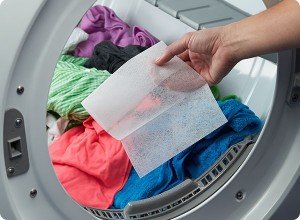Study Finds Scented Candles and Air Fresheners Pose Dangerous Health Risks
3 min read
<Woman’s Day Magazine> The holiday season is the perfect time get out those scented candles and stock up on new ones. Apple pie, pumpkin spice, and evergreen are some of our favorites — year round, really. But some of the results from recent studies have given us pause about scented decor.
It started when we spied an article by John Naish of the Daily Mail – the reporter said he found evidence to suggest that scented candles could actually make us quite sick. And it’s not just candles; apparently “aerosols, plug-ins, gels, and incense sticks” are also troubling.
The fear lies in the chemicals that can be found in the fragrance and wax. While more research certainly needs to be done to make a truly definitive statement, some researchers feel that extended, long-term use of certain scented items might lead to asthma, lung damage, or — in extreme cases — even cancer.
We dug a little more to inspect the claims further: For instance, researchers have cautioned that burning candles could cause indoor air pollution. A 2001 EPA study shows that candles with more fragrance in them produce more soot, and the agency suggests choosing unscented candles to reduce this leftover debris. The study also nods to possible organic compounds in candles that might be linked to increase cancer risk, but they report that currently the information is inconclusive.
A 2009 study out of South Carolina State University also warns about chemicals emitted into the air upon burning candles. The researchers found that burning paraffin candles produced “undesired chemicals,” like alkans, alkenes, and toluene, which can have harmful effects on humans.
“For a person who lights a candle every day for years or just uses them frequently, inhalation of these dangerous pollutants drifting in the air could contribute to the development of health risks like cancer, common allergies and even asthma,” said lead researcher and chemistry professor Dr. Ruhullah Massoudi.
Some researchers also worry about the long-term affects of using air fresheners. For instance, Public Health England’s Center for Radiation, Chemical and Environmental Hazards found that these fresheners can contain “considerable levels of formaldehyde” — but they also report that there’s “not a public health concern under normal ventilation conditions or product use.”
Still, the research continues to pile up: In 2014, Scientific American reported that a a study in the journal Environmental Health Perspectives shows a strong (though not totally definitive) link between exposure to phthalates (chemicals that are found in air fresheners and often plastics) during pregnancy and the child’s future risk of asthma.
“Phthalates are known to impede the endocrine system, the regulatory mechanism that dictates hormonal distribution in the body,” Scientific American reports. “The chemicals’ disruptive prowess have been linked to health problems including birth defects, cancers and diabetes. Yet until now there has been no data to suggest they were also harming children’s respiratory systems.”
Again, more research needs to be done. It’s hard to say whether these findings are enough to prove that everyone should avoid scented candles and the like — but the results also shouldn’t be ignored as the evidence builds.



